24 start with D start with D
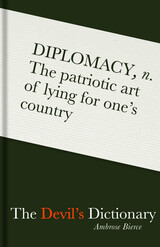
A contemporary of Mark Twain, Bierce brought his biting humor to bear on spoof definitions of everyday words, writing deliberate mistranslations of the vocabulary of the establishment, the church, and the politics of his day, and shining a sardonic light on hypocrisy and deception. These columns formed the beginnings of a dictionary, first published in 1906 as The Cynic’s Word Book, which stopped at the letter L, and five years later as a full A–Z text known as The Devil's Dictionary. More than one hundred years later, Bierce’s redefinitions still give us pause for thought: interpreting reporter, for example, as “a writer who guesses his way to the truth and dispels it with a tempest of words”; un-american as “wicked, intolerable, heathenish”; and politics as “the conduct of public affairs for private advantage.” This timely new edition of Bierce’s irreverent and provocative dictionary is the perfect gift for misanthropes and word lovers alike.
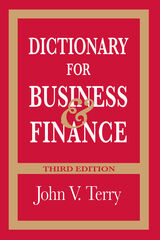
This revised and expanded edition of the Dictionary for Business & Finance defines terms from every field of business, as well as economics, statistics, and management and many words and expressions from other fields which have been adopted for special use by the business community. In this new edition, John V. Terry has added more than two hundred terms that help define the rapidly changing global economy of the late 1990s—terms like “European Currency Unit,” “Datsu-sara,” and “Keiretsu.” Of particular value to the student and business person alike are appendices for ratios, equations, formulas, abbreviations, and general financial and investment information.
In a clear, easy-to-follow style, Dictionary for Business & Finance goes directly to the business usage of a word or term, making it unnecessary to wade through irrelevant definitions.
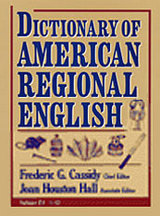
Dip into the Dictionary of American Regional English and enter the rich, endlessly entertaining, ever-changing world of American speech. Learn what a Minnesota grandma is making when she fixes lefse, what a counterman in a Buffalo deli means by kimmelweck or a Hawaiian baker puts into a malassada. Find out what kids on the streets of New York are doing when they play Johnny-on-the-pony or off-the-point, what Southerners do when they use their tom walkers, what the folks in Oklahoma and Texas celebrate on Juneteenth and those in some parts of Wisconsin at a kermis.
Like its enormously popular predecessors, this volume captures the language of our lives, from east to west, north to south, urban to rural, childhood to old age. Here are the terms that distinguish us, one from the other, and knit us together in one vast, colorful tapestry of imperfect, perfectly enchanting speech. More than five hundred maps show where you might be if you looked in a garden and saw moccasin flowers, indian cigars, or lady peas; if you encountered a bullfrog and cried, "jugarum!"; or came upon a hover fly and exclaimed, "newsbee!" And here, at long last, is an explanation of what the madstone and the money cat portend.
Built upon an unprecedented survey of spoken English across America and bolstered by extensive historical research, the Dictionary of American Regional English preserves a language that lives and dies as we breathe. It will amuse and inform, delight and instruct, and keep alive the speech that we have made our own, and that has made us who we are.

With this fifth volume of the Dictionary of American Regional English, readers now have the full panoply of American regional vocabulary, from Adam's housecat to Zydeco. Like the first four volumes, the fifth is filled with words that reflect our origins, migrations, ethnicities, and neighborhoods.
Contradicting the popular notion that American English has become homogenized, DARE demonstrates that our language still has distinct and delightful local character. If a person lives in a remote place, would you say he's from the boondocks? Or from the puckerbrush, the tules, or the willywags? Where are you likely to live if you eat Brunswick stew rather than jambalaya, stack cake, smearcase, or kringle? What's your likely background if your favorite card game is hasenpfeffer? bid whist? sheepshead? Whether we are talking about foods, games, clothing, family members, animals, or almost any other aspect of life, our vocabulary reveals much about who we are.
Each entry in DARE has been carefully researched to provide as complete a history of its life in America as possible. Illustrative citations extend from the seventeenth century through the twenty-first. More than 600 maps show where words were collected by the DARE fieldworkers. And quotations highlight the wit and wisdom of American speakers and writers. Recognized as the authoritative record of American English, DARE serves scholars and professionals of all stripes. It also holds treasures for readers who simply love our language.
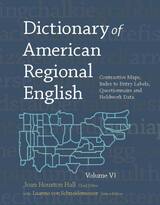
This companion volume to the Dictionary of American Regional English vastly enhances readers' use of the five volumes of DARE text. Those who want to investigate the regional synonyms for a rustic, or a submarine sandwich, or that strip of grass between the sidewalk and the street can search through the five volumes and compare the distributional maps. Or, with this volume, they can open to a page with all those maps displayed side by side. Not only is it an extraordinary teaching tool, it is also a browser's delight.
The user who wants to know what words characterize a given state or region is also in luck. The Index to the five volumes not only answers that question but also satisfies the reader's curiosity about words that have come into English from other languages, and words that vary with the speakers' age, sex, race, education, and community type.
And those who simply love to explore the variety and ingenuity of American expression will be seduced by the lists of answers to the DARE fieldwork questions. Dust balls under the bed? Americans have at least 176 names for them. Names for a heavy rainstorm? There are more than 200, including the fanciful frog-strangler, goose-drownder, lightwood-knot floater, and trash-mover. More than 400 questions and all of their answers are included in this treasure trove of American linguistic creativity.

Every page in this new volume of the Dictionary of American Regional English makes it wonderfully clear that regional expressions still flourish throughout the United States.
Depending on where you live, your conversation may include such beguiling terms as paddybass (North Carolina), pinkwink (Cape Cod), or scallyhoot (West); if you're invited to a potluck dinner, in Indiana you're likely to call it a pitch-in, while in northern Illinois it's a scramble; if your youngsters play hopscotch, they may call it potsy in Manhattan, but sky blue in Chicago.
Like the popular first three volumes of DARE, the fourth is a treasure-trove of linguistic gems, a book that invites exclamation, delight, and wonder. More than six hundred maps pinpoint where you might live if your favorite card games are sheepshead and skat; if you eat pan dulce rather than pain perdu; if you drive down a red dog road or make a purchase at a racket store; or if you look out your window and see a parka squirrel or a quill pig.
The language of our everyday lives is captured in DARE, along with expressions our grandparents used but our children will never know. Based on thousands of interviews across the country, the Dictionary of American Regional English presents our language in its infinite variety. Word lovers will delight in the wit and wisdom found in the quotations that illustrate each entry, and will prize the richness and diversity of our spoken and written culture.

Volume I of the Dictionary of American Regional English (DARE), published to wide acclaim in 1985, captured the wondrous variety and creativeness of American folk words and expressions and tickled the imagination of lovers of language around the world. Decades in preparation, the DARE corpus reflects the liveliness of English as it is spoken on America’s main streets and country roads—the regional metaphors and similes passed along within homes and communities.
Like its popular predecessor, Volume II is a treasury of vernacular Americanisms. In Virginia a goldfinch is a dandelion bird, in Missouri an insufficient rain shower a drizzle-fizzle. Gate was Louis Armstrong’s favorite sender (a verbal spur to a sidekick in a band), a usage that probably originated from the fact that gates swing. Readers will bedazzled by the wealth of entries—more than 11,000—contained in this second volume alone. The two and a half pages on “dirt” reveal that a small marble is a dirt pea in the South. To eat dried apples, a curious rural euphemism for becoming pregnant, appears in the five pages on “eat.” Seven pages on “horn” and related words take readers on a tour of the animal and nether worlds: horned lark, horned frog, horned pout (look that one up), and that horned fellow, the devil.
Initiated under the leadership of Frederic G. Cassidy, DARE represents an unprecedented attempt to document the living language of the entire country. The project’s primary tool was a carefully worded survey of 1,847 questions touching on most aspects of everyday life and human experience. Over a five-year period fieldworkers interviewed natives of 1,002 communities, a patchwork of the United States in all its diversity.
The result is a database of more than two and a half million items—a monument to the richness of American folk speech. Additionally, some 7,000 publications, including novels, diaries, and small-town newspapers, have yielded a bountiful harvest of local idioms. Computer-generated maps accompanying many of the entries illustrate the regional distribution of words and phrases.
The entries contained in Volume II—from the poetic and humorous to the witty and downright bawdy—will delight and inform readers.

How do Americans really talk—what are their hometown, everyday expressions in the many regions and sections of this huge country? The Dictionary of American Regional English (DARE), twenty years in preparation, answers these questions. It gives visible proof of the diversity—and the vitality—of American folk language, past and present.
DARE includes thousands of words and phrases not found in conventional dictionaries, and out-of-the-way meanings for common terms. Here are local names for familiar objects, from old cars to frying pans to dust-balls under the bed (176 names for these); for plants, animals, and critters real and imaginary; for rainstorms and heat waves; for foods, clothing, children’s games and adults’ pastimes; for illnesses and traditional remedies. Here are terms—salty, sarcastic, humorous—by which people describe each other, their physical appearance, characters, emotions, states of mind. Here are metaphors and similes galore.
In Wisconsin a man whose motives are suspect “has beans up his nose.” In Georgia a conceited person is “biggity”; someone important or self-important in the Northwest is “bull of the woods.” A close friend may be “bobbasheely” (Mississippi) or an “ace boon coon” (New York City). West of the Appalachians the old saw “I wouldn’t know him from Adam” becomes “I wouldn’t know him from Adam’s off-ox” (or, in the South, “from Adam’s housecat”). These and some twelve thousand other expressions are identified and explained in the first volume of DARE.
While DARE is the work of many dedicated people, it owes its existence to Frederic G. Cassidy, who in 1963 agreed to organize the project, raise funds for it, and serve as Editor-in-Chief. Cassidy trained teams of fieldworkers and equipped them with a carefully worded questionnaire: 1,847 questions grouped in 41 broad categories ranging over most aspects of everyday life and common human experience. From 1965 to 1970 the fieldworkers conducted week-long interviews with natives of 1,002 representative communities in all fifty states. The two and a half million items gleaned from the fieldwork, coded and computer-processed, are DARE’s primary data base, a rich harvest of regional Americanisms current in the seventh decade of this century. Earlier collections have been drawn upon as well, notably the 40,000 expressions recorded by the American Dialect Society since 1889; and some 5,000 publications, including regional novels and diaries and small-town newspapers, have been combed for local idioms.
A unique feature of the dictionary is the computer-generated maps that accompany many of the entries to show the geographical distribution of the term. The base map is schematic, distorting the areas of the states to reflect their population density.
Volume I includes extensive introductory material on DARE itself and on American folk speech. Its entries, from Aaron’s rod to czarnina, cover nearly a quarter of the total DARE corpus.
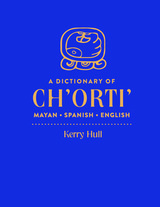
Each entry contains examples of Ch’orti’ sentences along with their translations. Each term is defined grammatically and linked to a grammatical index. Variations due to age and region are noted. Additionally, extensive cultural and linguistic annotations accompany many entries, providing detailed looks into Ch’orti’ daily life, mythology, flora and fauna, healing, ritual, and food. Hull worked closely with native speakers, including traditional ritual specialists, and presents that work here in a way that is easily accessible to scholars and laypersons alike.

What do such words as “information,” “displacement,” and “courtship” mean to the growing ranks of ethologists who study animal behavior? Like all sciences, ethology has accumulated its own set of concepts and terms, taken from everyday language, borrowed from neighboring disciplines, or coined especially to describe novel ideas and phenomena. Klaus Immelmann and Colin Beer have responded to the acute need for an authoritative dictionary of ethology with this valuable guide to the world of animal behavior.
The authors present a balance of historical, enduring, and current terminology, providing clear and concise definitions of the terms central to ethological writing. They give special treatment to terms from related disciplines, particularly evolutionary biology, physiology, ecology, and sociobiology, and to controversial concepts such as “instinct,” “motivation,” and “imprinting.” For words like these, the authors take pains to explain the nature of the problem, to distinguish differences of meaning, and to chart the range of application. A preponderance of terms relate to the behavior of higher vertebrates, especially mammals and birds, since these animals supply a high proportion of ethology’s basic ideas and technical concepts.
Representing the culmination of two decades of assiduous scholarship, this book will be immensely useful to neophyte and professional alike.

This dictionary will be indispensable to English–speaking students and researchers working in Indonesian or Southeast Asian studies. It will also be useful for scholars working in Bahasa Indonesian, reading texts written about Islam by Indonesian Muslims, as well as for Southeast Asia area scholars generally who are using sources in Western languages.
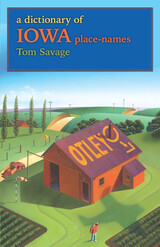
Savage includes information on the place-names of all 1,188 incorporated and unincorporated communities in Iowa that meet at least two of the following qualifications: twenty-five or more residents; a retail business; an annual celebration or festival; a school; church, or cemetery; a building on the National Register of Historic Places; a zip-coded post office; or an association with a public recreation site. If a town’s name has changed over the years, he provides information about each name; if a name’s provenance is unclear, he provides possible explanations. He also includes information about the state’s name and about each of its ninety-nine counties as well as a list of ghost towns. The entries range from the counties of Adair to Wright and from the towns of Abingdon to Zwingle; from Iowa’s oldest town, Dubuque, starting as a mining camp in the 1780s and incorporated in 1841, to its newest, Maharishi Vedic City, incorporated in 2001.
The imaginations and experiences of its citizens played a role in the naming of Iowa’s communities, as did the hopes of the huge influx of immigrants who settled the state in the 1800s. Tom Savage’s dictionary of place-names provides an appealing genealogical and historical background to today’s map of Iowa.
“It is one of the beauties of Iowa that travel across the state brings a person into contact with so many wonderful names, some of which a traveler may understand immediately, but others may require a bit of investigation. Like the poet Stephen Vincent Benét, we have fallen in love with American names. They are part of our soul, be they family names, town names, or artifact names. We identify with them and are identified with them, and we cannot live without them. This book will help us learn more about them and integrate them into our beings.”—from the foreword by Loren N. Horton
“Primghar, O’Brien County. Primghar was established by W. C. Green and James Roberts on November 8, 1872. The name of the town comes from the initials of the eight men who were instrumental in developing it. A short poem memorializes the men and their names:
Pumphrey, the treasurer, drives the first nail;
Roberts, the donor, is quick on his trail;
Inman dips slyly his first letter in;
McCormack adds M, which makes the full Prim;
Green, thinking of groceries, gives them the G;
Hayes drops them an H, without asking a fee;
Albright, the joker, with his jokes all at par;
Rerick brings up the rear and crowns all ‘Primghar.’
Primghar was incorporated on February 15, 1888.”

Originally offered in two separate volumes, A Dictionary of Iraqi Arabic, a staple of Georgetown University Press's world-renowned Arabic language program, now handily provides both the English to Arabic and Arabic to English texts in one volume. Designed for an English speaker learning Arabic, this is a key reference for anyone learning the colloquial speech of Iraq as spoken by educated people in Baghdad. Using romanized transliteration and transcription rather than the Arabic alphabet, it is further enhanced in most cases by having sentences to illustrate how individual word entries are used in context, reinforcing the user's acquisition of colloquial Iraqi.
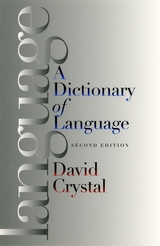
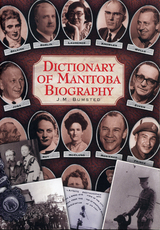

This classic volume presents the core vocabulary of everyday life in Morocco—from the kitchen to the mosque, from the hardware store to the natural world of plants and animals. It contains myriad examples of usage, including formulaic phrases and idiomatic expressions. Understandable throughout the nation, it is based primarily on the standard dialect of Moroccans from the cities of Fez, Rabat, and Casablanca. All Arabic citations are in an English transcription, making it invaluable to English-speaking non-Arabists, travelers, and tourists—as well as being an important resource tool for students and scholars in the Arabic language-learning field.
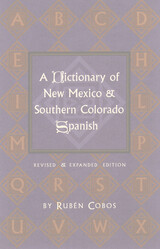
Ruben Cobos spent a decade working on the revised and expanded edition of the dictionary, published in 2003. The Dictionary of New Mexico and Southern Colorado Spanish has assumed its place as the most authoritative reference on the archaic dialect of Spanish spoken in this region.

While the Dictionary of Nineteenth-Century British Scientists covers those working in traditional scientific areas such as physics, astronomy, chemistry, mathematics, and biology, it also acknowledges those working in the human sciences such as anthropology, sociology, psychology, and medicine. In addition, areas often overlooked by historians of science—such as phrenology, mesmerism, spiritualism, scientific illustration, scientific journalism and publishing, instrument making, and government policy—are included here, as are the important roles of neglected "amateurs," such as women and members of the working class. By including those who worked in nontraditional areas and by considering the social and cultural context in which they lived, the dictionary reflects a richer picture of nineteenth-century science than has ever been seen before.
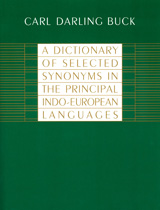

A Dictionary of Syrian Arabic provides Syrian terms for the language spoken in everyday life by Muslims primarily in Damascus, but understandable throughout Syria as well as in the broader linguistic areas of present-day Lebanon, Jordan, and among the Palestinians and the Arabic-speaking population of Israel. Entries include examples, idioms, and common phrases to illustrate usage. The Arabic terms are presented in transcription. It is useful for students of Arabic, scholars wishing to train in the Syrian dialect, and visitors and travelers to Syria and other nations where the dialect is spoken. A thorough introduction outlines the sociolinguistic situation in Syria and covers phonology, morphology, syntax, grammar, and vocabulary. Alongside the other Arabic language-learning and reference works published by Georgetown University Press, this dictionary is yet another invaluable volume on spoken Arabic, belonging at the side of travelers and scholars, and on the shelves of research and reference libraries.
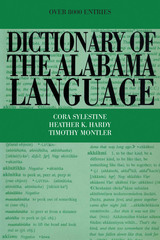
The Alabama language, a member of the Muskogean language family, is spoken today by the several hundred inhabitants of the Alabama-Coushatta Indian Reservation in Polk County, Texas. This dictionary of Alabama was begun over fifty years ago by tribe member Cora Sylestine. She was aided after 1980 by linguists Heather K. Hardy and Timothy Montler, who completed work on the dictionary after her death.
This state-of-the-art analytical dictionary contains over 8,000 entries of roots, stems, and compounds in the Alabama-English section. Each entry contains precise definitions, full grammatical analyses, agreement and other part-of-speech classifications, variant pronunciations, example sentences, and extensive cross-references to stem entries. The Alabama-English section is followed by a thorough English-Alabama finder list that functions as a full index to the definitions in the Alabama-English section.
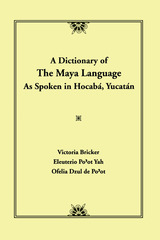
The Maya language of Yucatan is known as Yucate by linguists, but its speakers refer to it as May. Dialiectical differences are minimal across the peninsula, and the more than 750,000 speakers of Maya can be understood wherever they go. Moreover, it is not only a living language but is of great use to epigraphers working on ancient Maya glyphs.
This dictionary is the culmination of fourteen years’ labor centering on the town and dialect of Hocaba. Whereas other dictionaries of may use Latin paradigms, this is the first to provide a comprehensive, systematic listing of the stems that can be derived from each root and that give Maya its distinctive character. The entries cover the full range of Maya speech, from simple expressions and idioms to compound stems. Maya sample sentences provide a window into the richness of everyday communication, with its mixture of wit, epithets, insults, riddles, aphorisms, and exchanges of information, including a wonderful assortment of metaphorical expressions like "peccary’s eyelashes" for a type of bean, "the end of the road" for marriage, and a verb meaning "to draw breath with puckered mouth after eating chili." Among the cultural domains encompassed by the dictionary are agriculture, architecture, astronomy, culinary practices and recipes, education, folklore, games, humor, medical prescriptions, ritual, toys, and weaving, many of which have roots in the Precolumbian past. In addition to the dictionary entries, this work also contains a short grammar, a botanical index, and bibliography.

One of the keys to learning the Turkish language is to understand the importance and function of the verb. The stem of the verb, together with various suffixes of mode, tense, person, along with a subject and/or object, may be the equivalent of an entire English sentence. A Dictionary of Turkish Verbs is an aid to both the beginning and more advanced student of the language by providing approximately 1,000 verbs in context as they appear in up-to-date colloquial Turkish phrases and sentences, or short dialogues in translation.
Contrasting English and Turkish ways of expression, this multipurpose dictionary also helps the English speaker avoid the most common errors—with most verbs cross-referenced to related verbs, synonyms, or antonyms, and to the broader themes or categories of meaning to which they belong. Includes an English-Turkish index and a thesaurus section (using Roget's categories) where verbs of related meaning appear together and a short reference list of verb-forming suffixes. For students at any stage of learning the Turkish language, or for the self-motivated traveler, this unique dictionary will help open the door to greater understanding in an increasingly important area of the world.
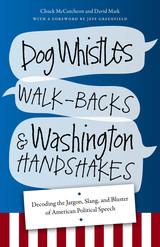
READERS
Browse our collection.
PUBLISHERS
See BiblioVault's publisher services.
STUDENT SERVICES
Files for college accessibility offices.
UChicago Accessibility Resources
home | accessibility | search | about | contact us
BiblioVault ® 2001 - 2024
The University of Chicago Press









